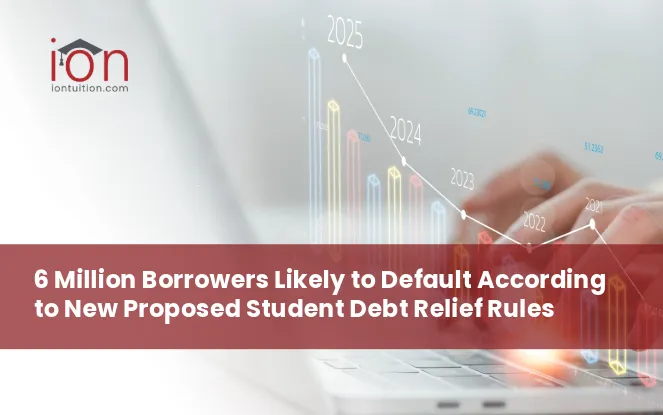The Biden Administration continues to push new student debt relief efforts. On October 25, the U.S. Department of Education released a press release announcing a set of proposed rules that, if finalized, would authorize student loan forgiveness for nearly eight million borrowers facing financial hardship.
This initiative aims to alleviate the burden for borrowers grappling with high medical expenses, childcare costs, or financial struggles stemming from natural disasters.
Student Debt Relief Targeted at Struggling Americans
The new rules are designed to address some borrowers’ persistent financial challenges and expand existing forgiveness options.
“For far too long, our broken student loan system has made it too hard for borrowers experiencing heartbreaking and financially devastating hardships to access relief, and it’s not right.”
-U.S. Secretary of Education Miguel Cardona.
The Biden administration’s proposal seeks to help those struggling with various forms of hardship that impede their ability to repay student debt loans, potentially waiving up to the entire outstanding balance if deemed appropriate.
Two New Pathways to Student Loan Forgiveness
The Department of Education’s proposed regulations outline two distinct pathways to grant student debt relief:
1. Individualized, automatic relief without an application
This first path allows the Secretary of Education to provide automatic, individualized loan forgiveness for borrowers deemed “most at risk for default” (at least 80% likely) within the next two years. This decision would be based on predictive assessment utilizing factors such as household income, assets, loan balances, and repayment history.
The approach is designed to prevent the severe consequences of default and deliver relief to the most vulnerable borrowers. An estimated two-thirds of those who qualify for automatic relief under this pathway woudl be Pell Grant recipiences, highlighting the plan’s focus on low-income borrowers.
2. Application-based holistic assessment of the borrower’s hardship
The second pathway offers a more comprehensive approach, allowing current and future borrowers to apply for relief based on a detailed assessment of their financial hardship. If a borrower’s circumstances suggest that no other payment relief options would adequately address their situation, they may qualify for loan forgiveness through this method. Factors such as unexpected medical expenses, ongoing costs related to caregiving, or financial difficulties arising from natural disasters would be considered.
Rules Will Be Published in Federal Register for Review and Wouldn’t Be Finalized until 2025
The Biden administration has provided over $175 billion is student loan forgiveness for nearly 5 million borrowers through PSLF, IDR, BDR, and disability relief. They’ve also recently increased the maximum Pell Grant award by $900.
However, other attempts at student loan relief made by the Biden administration have not been so successful, including the Supreme Court decision’s to block a one-time forgiveness of up to $20,000 in 2023 and more recent injunctions to block to the Biden administration’s SAVE income-driven repayment option and its “Plan B“.
The Department Expects 6 Million Borrowers to Default
The frequent attempts at student loan forgiveness are an effort to fulfill a campaign promise made by Biden, but are also an attempt to limit the number of student loan defaults.
The Department is citing numerous reports on student loan defaults and has a comprehensive list of “Predictors” in their predictive statistical model:
| Past and Present Repayment Statuses | Interest rate on loans | Highest academic level reported for the borrower’s loans |
| Total amount of debt outstanding | Years in repayment | Highest degree the borrower ever reported pursuing |
| Past and present types of loans held, and amounts borrowed | Pell Grant receipt | Graduation indicator |
| Year of loan disbursement | Adjusted Gross Income from the borrowers’ first FAFSA | Year of graduation, for those graduated |
| Ratio of current loan balance to balances from 4 months prior | Expected Family Contribution calculated from inputs on the FAFSA | Predominant degree of the school the student last attended or from which they last graduated |
| Repayment plans in which borrower currently participates | Parent education level reported on the FAFSA | Ownership type of the school the student last attended or from which they last graduated |
| Payments made on student loans | Dependent/independent status | Cohort default rates of the school the student last attended or from which they last graduated |
| Scheduled payments on student loans | Borrower age | Earnings and debt information from College Scorecard of the school the student last attended or from which they last graduated |
The Department estimates that approximately 6 million borrowers are 80% likely to default within two years and would qualify for their proposed automatic relief according to their proposed rule.
The Department’s track record on comprehensive relief efforts and the administration change after the election makes it unlikely these proposed rules will be finalized. Therefore, schools must take default aversion into their own hands and launch a program like IonTuition’s before these defaults have a chance to develop.

